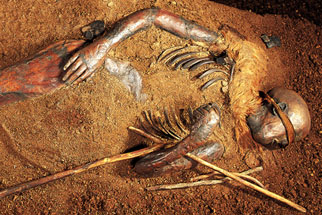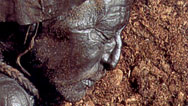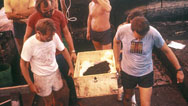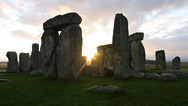Bog Bodies of the Iron Age
- By Susan K. Lewis
- Posted 02.07.06
- NOVA
More than a thousand preserved bodies and skeletons have emerged from the peat bogs of Northwest Europe, and scientists now have the tools to study the remains in such detail that they can, in a sense, resurrect ancient people. Drawing on the work of Dutch bog-body scholar Wijnand van der Sanden, the following map charts more than 80 important finds and includes profiles of some of the most fascinating.
 Launch Interactive
Printable Version
Launch Interactive
Printable Version
On this map of Northwest Europe, see where preserved corpses have been discovered and examine a dozen spectacular finds.
This feature originally appeared on the site for the NOVA program The Perfect Corpse.
Credits
Special Thanks
- Vincent van Vilsteren, Drents Museum
Photos
- (Gallagh Man, Meenybraddan Woman)
- © National Museum of Ireland
- (Oldcroghan Man)
- © BBC 2005
- (Amcotts Moor Woman)
- Courtesy Michael Rhodes
- (Lindow Man)
- © British Museum/HIP/Art Resource, NY
- (Yde Girl, Weerdinge Men)
- Courtesy Drents Museum, Assen
- (Rendswí¼hren Man, Osterby Man, Windeby Girl)
- Courtesy Archäologisches Landesmuseum
- (Tollund Man)
- © Silkeborg Museum, Denmark
- (Grauballe Man)
- © Mogens_Laier/epa/Corbis
Illustration
- (map)
- © NOVA/WGBH Educational Foundation
Related Links
-

10 Ways to Make a Mummy
How do corpses become mummies? See how natural forces and artificial techniques preserve bodies through the ages.
-

Tollund Man
This 2,400-year-old corpse is the world's most famous bog body. Learn how scientists reconstructed his final hours.
-

America's Bog People
In a peat pond down the road from Florida's Disney World, archeologists unearth an 8,000-year-old cemetery.
-

Secrets of Stonehenge
New archeological finds shed light on the most misunderstood monument of the ancient world.
You need the Flash Player plug-in to view this content.

